The works and thoughts of island residents,
delivered on a handmade newspaper.
More than 20 years ago, Hommachi Street, which was once the bustling main approach on Miyajima lined with inns and merchant homes, came to be known as "Machiya Street." The street has become home to more inns, cafes, and the like which utilize the traditional machiya architecture of the Edo period, and they give off a unique atmosphere next to the homes and shops run by individuals. Mr. Tetsuya Miyazato, of "Gallery Miyazato," conveys information about this Machiya Street in a newspaper. We asked him about his feelings for the local community, which fuel this activity.
Comrades from Machiya Street gathered
to found this newspaper.
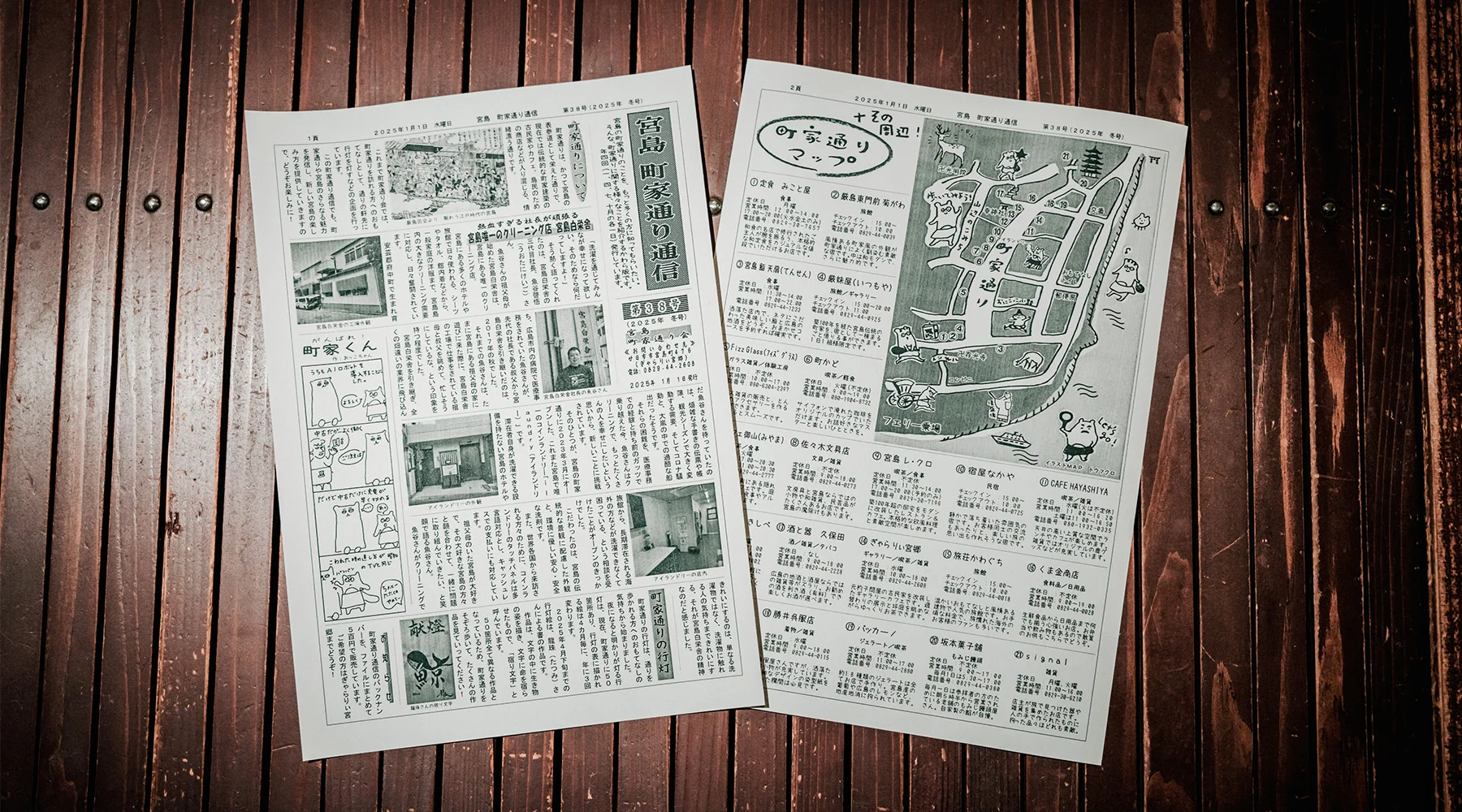
"Gallery Miyazato" has remodeled a merchant home built over 200 years ago, and operates as a rental gallery and cafe, as well as sells miscellaneous goods. It opened in 2003, when Mr. Tetsuya Miyazato was away from Miyajima.
"The Miyazato family worked as a rice scoop wholesaler for many years. However, as time passed, the family was forced to shut down business, and this building, which was the workspace, was vacant for some time. After inhering this building, my parents, who belonged to the main family line, created the current space with help from the architect Mr. Toshiwo Fukushima."
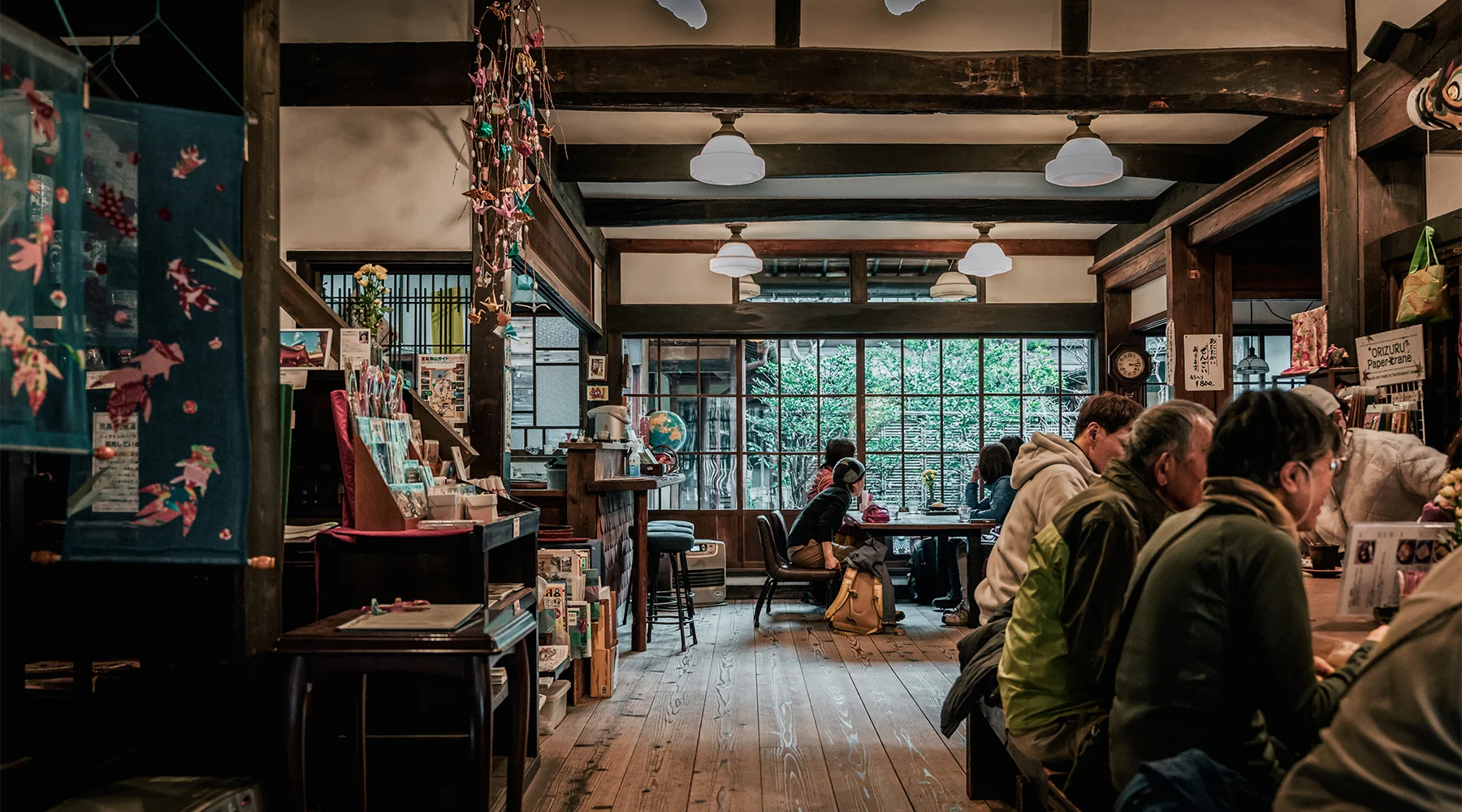
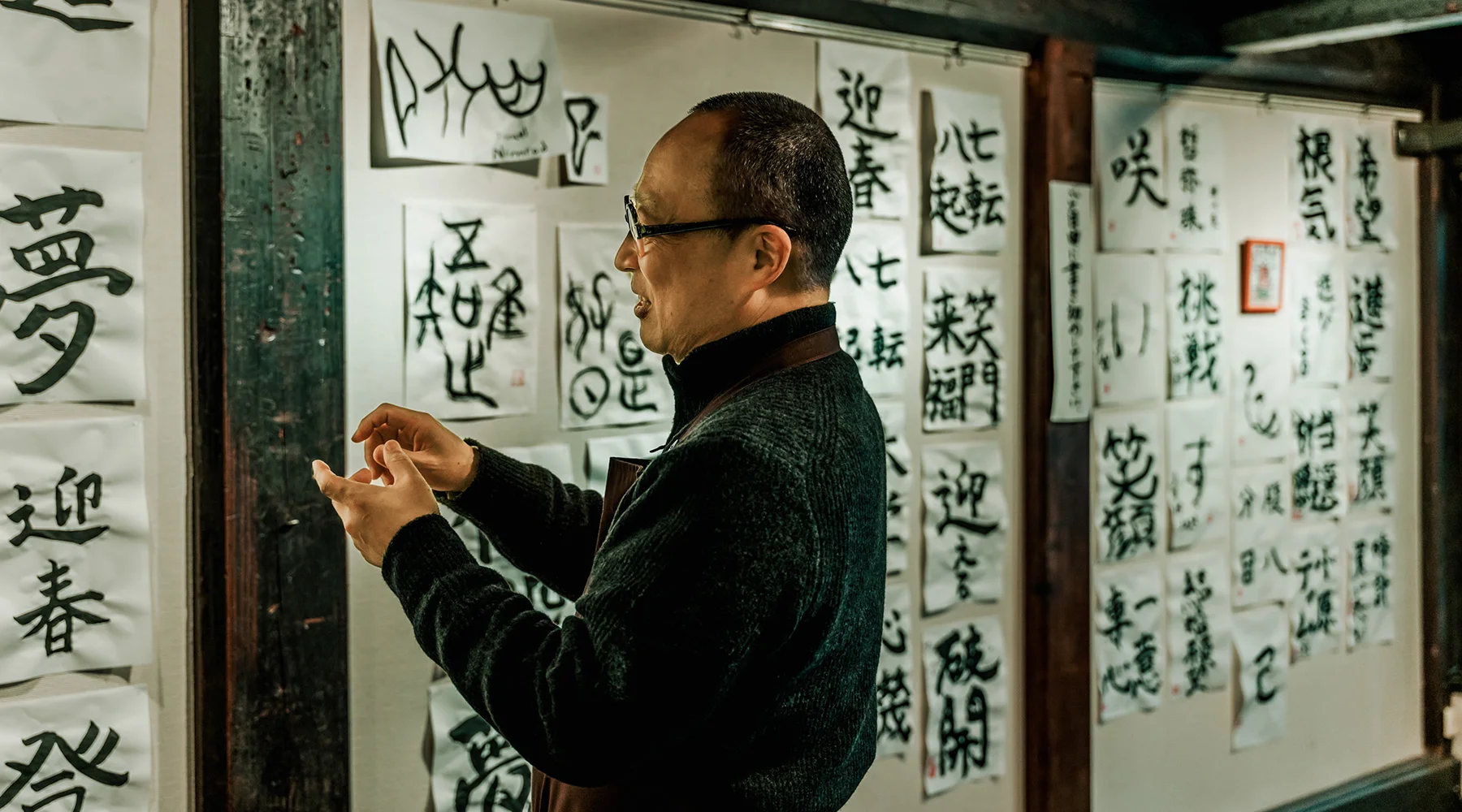
Mr. Miyazato left his job as a system engineer to return home more than ten years ago, and at first, he was quite casual about it, thinking he would help with the shop. However, he inherited the will of his late father, who strived to revitalize the community through activities such as the Machiya Street andon lantern project, and he became representative of the "Machiya Street Committee." Furthermore, when he was presented with a plan by the president of the "Kubota" sake and tableware shop, who is also a childhood friend, and the shop owner of the "Ohisama Bread Workshop" (currently "OHISAMA"), he founded the "Miyajima Machiya Street Newsletter" in 2015, listing a map of Machiya Street and community information. They print 1,500 copies four times a year, distributing them at locations such as shops on Machiya Street, and tourist information desks at Miyajima pier and Miyajimaguchi.
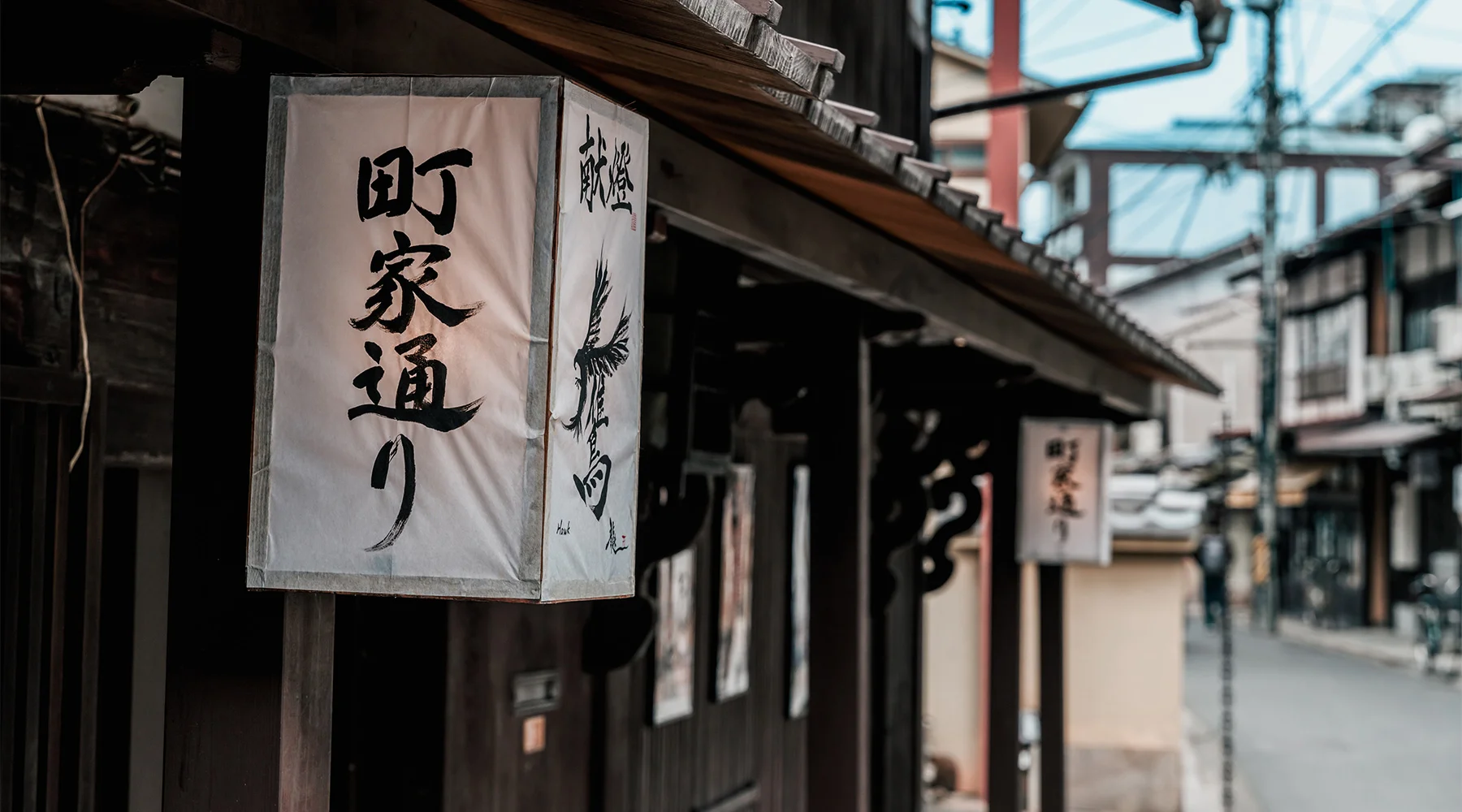
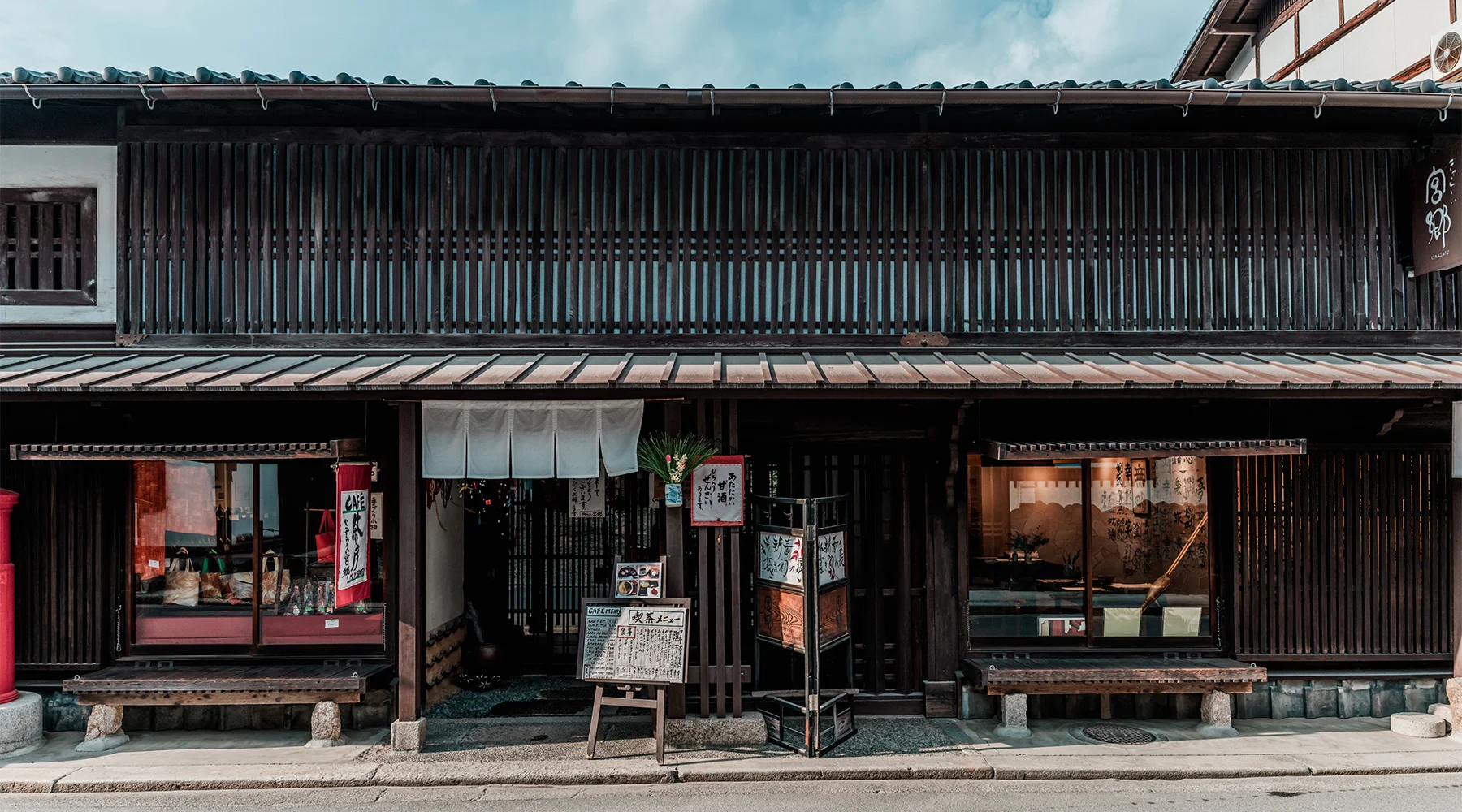
Wanting to deliver information known
only to island residents.
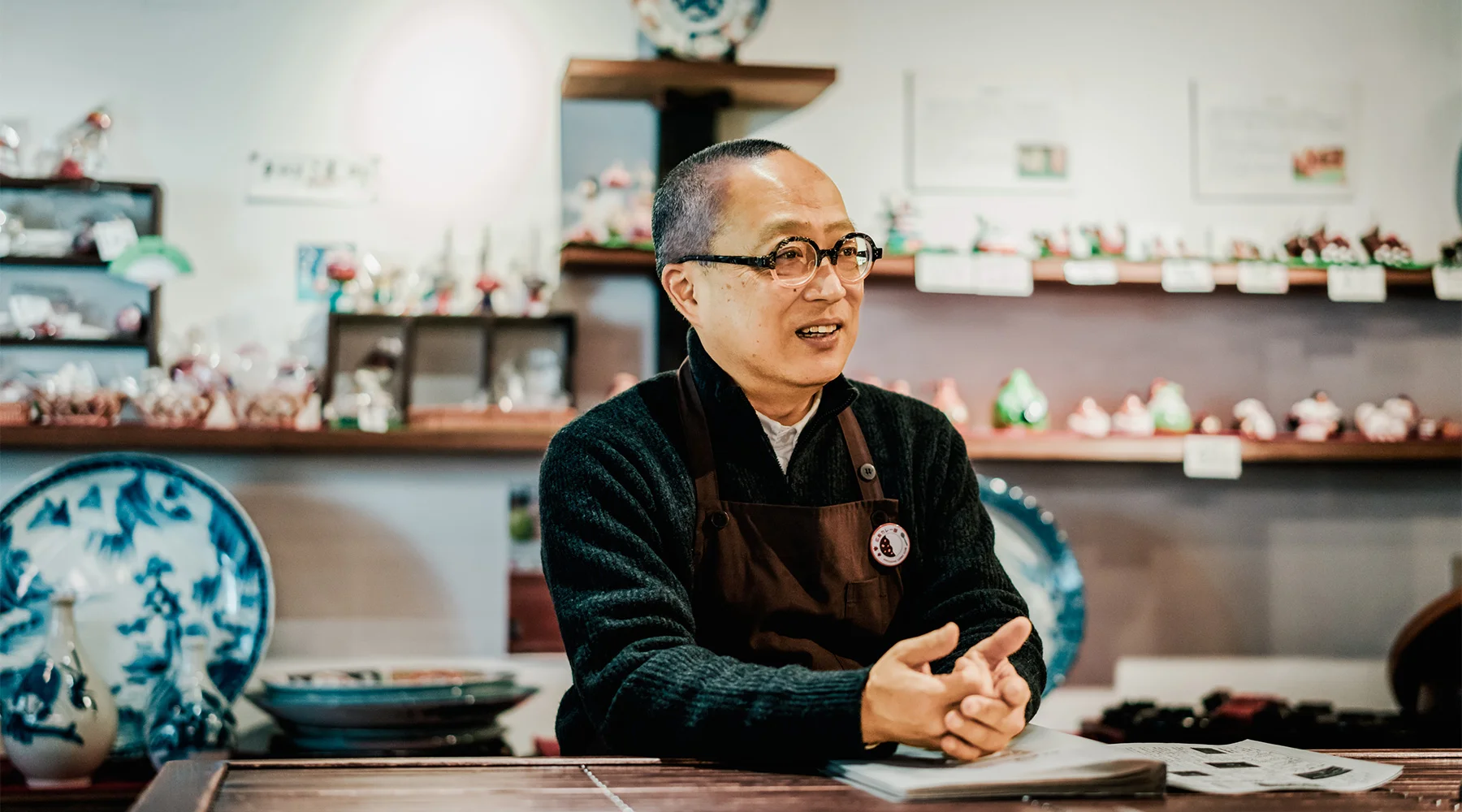
The "Machiya Street Newsletter" will mark the 10th anniversary of its founding in the 2025 spring edition, and each edition features information carefully collected by Mr. Miyazato. For example, at night after the ferries have stopped operation, how does an ambulance carry a patient to an off-island hospital? When a typhoon overlaps with high tide, what kind of countermeasures are taken to prevent flooding at buildings on the shore? He held interviews based on questions he felt in his daily life and the like, and thus learned that the fire department has a ferry boat that can carry an ambulance, and that there is a movable tide barrier placed in front of the stone torii gate.
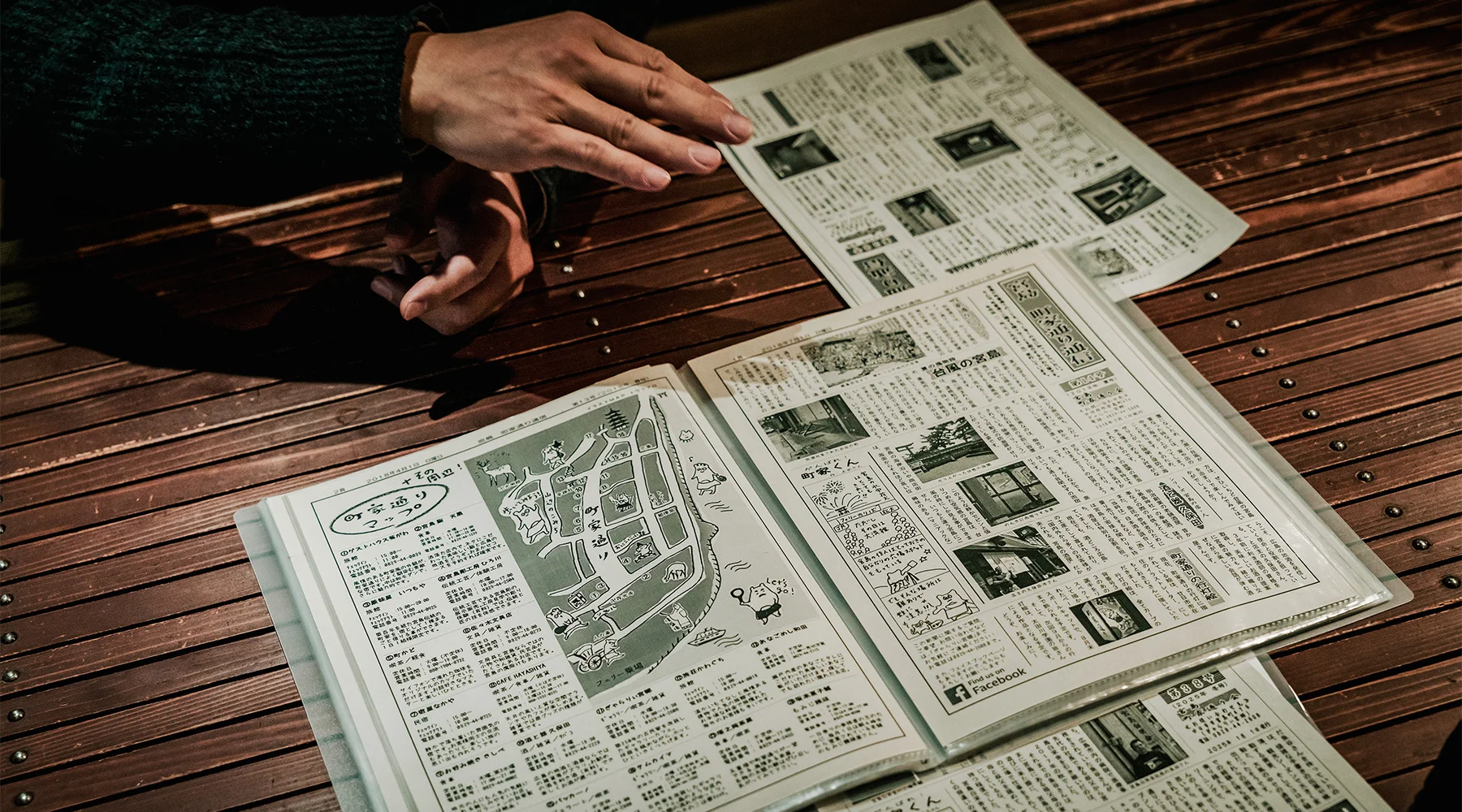
Of course, he also shines a spotlight on the people living on Miyajima. In one such article, he visited a factory that manufactures sweets boxes for souvenirs.
"As I spoke to them, I was moved by the passion they put into creating the outer boxes. I really felt that the typical everyday life on Miyajima is woven together with the rhythmical sound of assembling these boxes," said Mr. Miyazato.
He wants to print articles on topics not covered by guidebooks, as well as on the people working behind the scenes on the island. He hopes that by reading those articles before touring Miyajima, visitors can double the enjoyment on their journey. These hopes push Mr. Miyazato forward. There is also a reason why he prefers a paper newspaper, and not SNS. "I want people who should be linked together, people who have some connection, to pick it up and read it. We don't need to become a major medium," he says with a laugh.
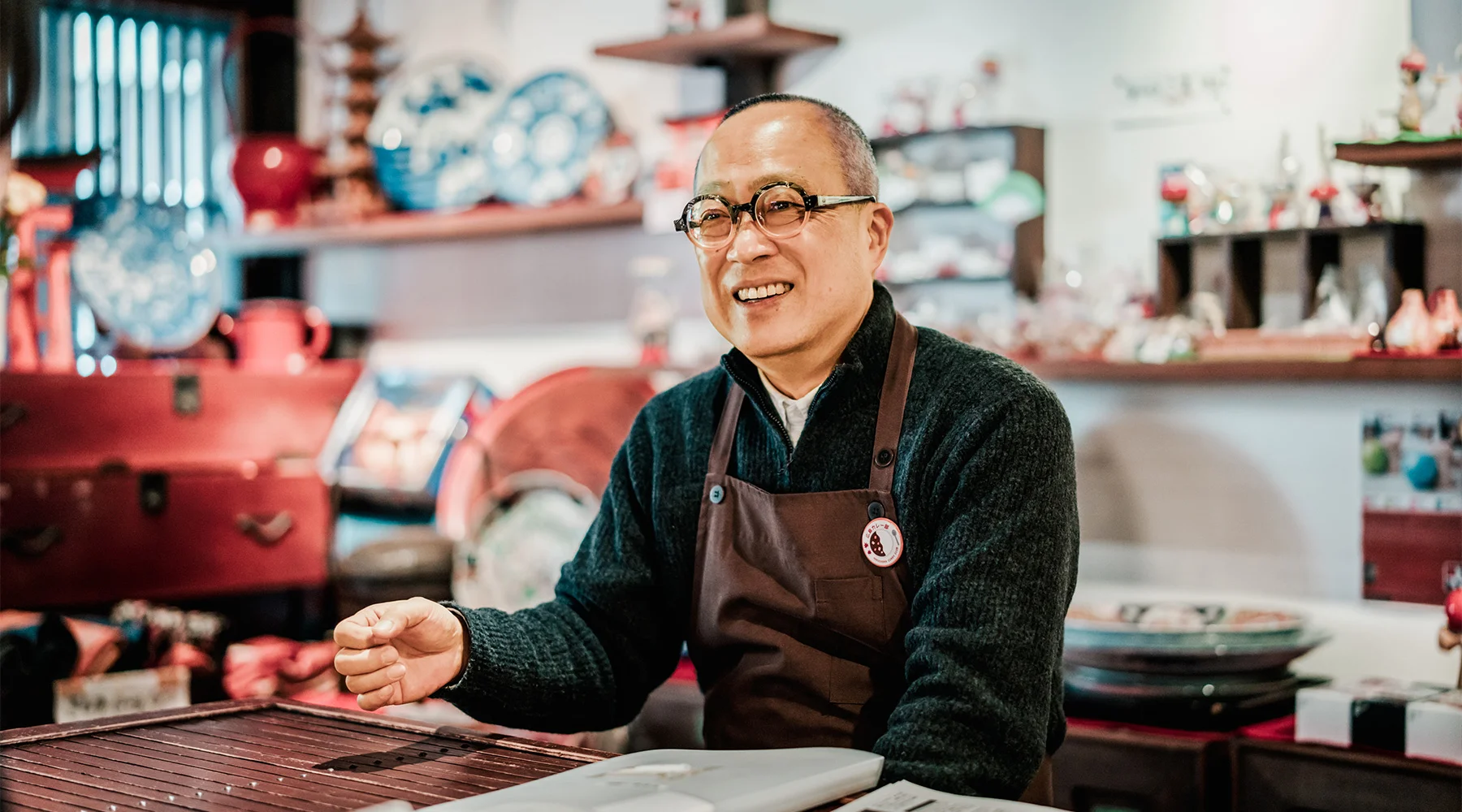
Touching on the "feelings on Miyajima"
that island residents have.
Mr. Miyazato says that when he first returned to the island, he only saw Miyajima as a tourist site and was somewhat disconcerted by the deep relationships between island residents. However, he says that this feeling has now changed to comfort in daily living.
"There are many familiar faces, so I feel peace of mind, and I have come to participate in festivals or other events that I previously was not interested in. I became curious about the characteristics of machiya houses on Miyajima, so I went to listen to a lecture on traditional machiya architecture."
used as a shop or workplace, there is a room called the o-ue with a high, open ceiling where the household shrine is placed.
"The reason there is no second floor above the o-ue is because it would be rude for people to walk above the enshrined god. The building itself is designed with the intent to live together with gods. Miyajima is often called the island of the gods, and I believe Miyajima to be a place where the gods and people are close to one another. I think that the feeling of living together with the gods is the essence of belief."
He says that by learning about this architecture style, which cannot be found anywhere else in Japan except for Miyajima, led to him feeling more proud of living on Miyajima.
Many people on Miyajima live with their own "thoughts on Miyajima." If visitors can casually speak with island residents, maybe they will want to visit again. Mr. Miyazato sincerely hopes that the "Machiya Street Newsletter" will help that happen, and that "Gallery Miyazato" will be that kind of place.
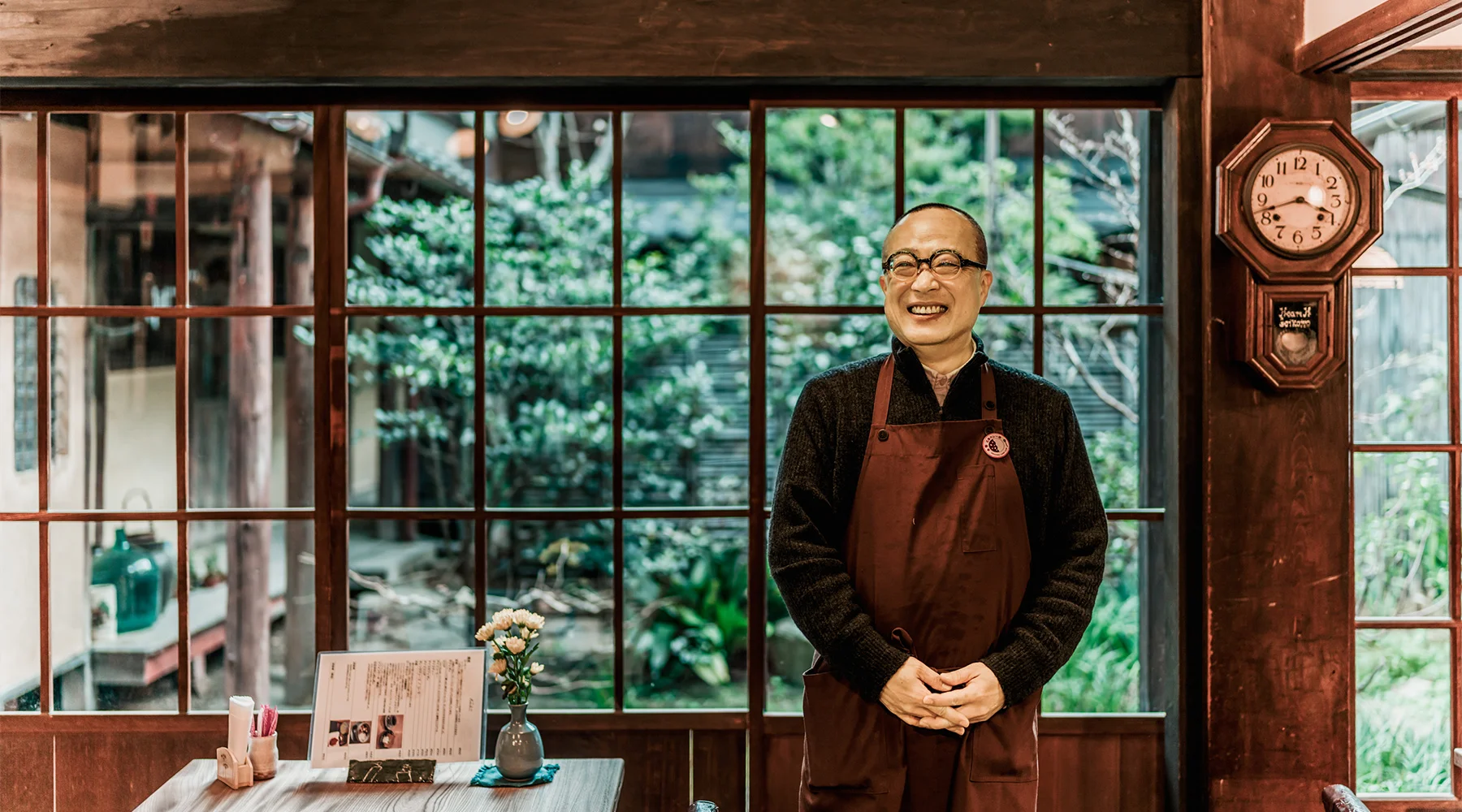
but also interact with community members to see daily life here.
- Gallery Miyazato
- Address 476 Saiwaicho-higashiomote, Miyajima-cho, Hatsukaichi-shi (Machiya Street)
- HP http://ww4.tiki.ne.jp/~miyazato/
